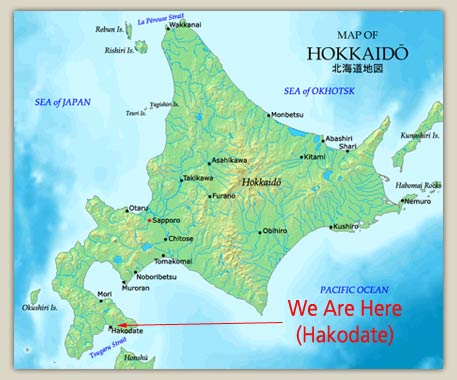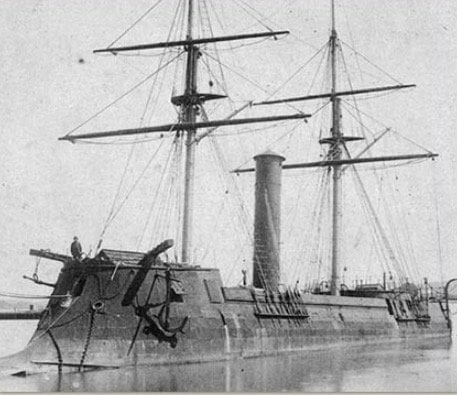My son and I are enjoying our trip to northern Japan. We had fun exploring Aomori, visiting the windswept beauty of the Tsugaru Peninsula on the western side of the prefecture, birthplace of enka singer Yoshi Ikuzo, who has belted out many songs about drinking sake while lamenting lost love, and one really famous song about how rural the village he came from is (“we have no traffic lights because…we have no electricity there”). Then we took in the city of Hirosaki, a beautiful castle town from the Edo Period, which was great fun to explore. While we were here, we got to experience one of the most unintelligle dialects of nihongo there is, Tsugaru-ben, which is said to be closer to French than Japanese, and I believe it. Then it was off to the ferry terminal to take a boat to Hokkaido…
Now we’re in Hakodate (hah-ko-DAH-tay), a beautiful city on the southern tip of Hokkaido. While northern Honshu has been inhabited continuously since the stone age, Hokkaido itself was sparsely populated when the Meiji Era began. Japan’s new government realized the island might be in danger of being seized by Russia, so in the 1870s they opened the land up to mass settlement. Perhaps as a result, many cities here such as Hakodate and Otaru have a San Francisco-esque feel to them, complete with pleasant streetcars that have been running for over a century by now. Hakodate was one of the cities visited by Admiral Perry and his famous “Black Ships” (this year is the 150th anniversary of the opening of the city’s port), and the first American to be buried in Japan lies in the city’s gaijin bochi (foreigners’ grave yard). The city lies at the foot of Mt. Hakodate, and is famous for having one of the most beautiful night views of the world, up there with Hong Kong and Naples, according to a list someone made up. We’ll be sure and check it out.

We took the ferry to Hokkaido, the home of diary products and potatoes in Japan.















